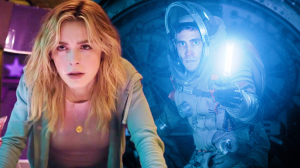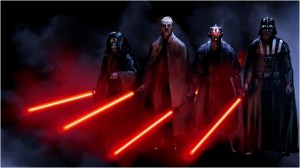Star Trek: Picard‘s story continues past the final Season 2 credits in Star Trek: Picard – Stargazer, the new series from IDW Publishing. Picard co-creator Kirsten Beyer teams with Star Trek comics veteran writer Mike Johnson, frequent artistic collaborator Angel Hernandez, and colorist J.D. Mettler in filling the gap between Picard‘s second and third seasons. Stargazer‘s story is character-focused, following Jean-Luc Picard and Seven of Nine as each tries to readjust to life in Starfleet. There are some offputting visual details but ultimately this debut issue serves as a solid start to the next chapter in Picard‘s saga.
Videos by ComicBook.com
Stargazer begins with Picard testing Seven of Nine as part of her consideration for reenlisting in Starfleet. After years of acting as a Fenris Ranger, part of a much more action-first ensemble, Seven wonders if she has what it takes to solve conflicts without weapons. Meanwhile, Picard is chafing at his mostly ceremonial Starfleet duties but acquiesces to joining the new Stargazer crew on a mission to a planet he visited as captain of his Stargazer, recounting the story of how one confident bluff avoided a war between the Federation and the Romulan Empire on his last visit. It isn’t long after he admits that he isn’t sure whether he’d have pulled the trigger had his bluff been called that the Stargazer arrives at its destination. Nothing is as it should be, and Picard and the Stargazer are soon caught in the crossfire.
The conflicts here are obvious. Picard is potentially forced to reckon with the possibility that his bold bluff didn’t pay off as well as he thought. Now he’s in a situation where he may finally have to decide whether or not to pull that trigger. Meanwhile, Seven is back in her element as a Fenris Ranger, but will likely have to choose between remaining on that path or taking Starfleet’s more diplomatic approach.
Beyer and Johnson are familiar with these characters, and that comes through. The challenges placed in front of Picard and Seven are ones that make sense given what they’ve been through and the points they each are at in their respective lives and careers. The flashback to Picard’s time on the original Stargazer gives them an opportunity to contrast who Picard was then with who he is now in a way that even the television series hasn’t done. Picard’s stern but diplomatic dialogue in the flashback feels like it could have come from an episode of Star Trek: The Next Generation. The dismissiveness with which Picard ends the conversation stretches the characterization a bit but can be chalked up to this being a younger, more cocksure version of the man who would mature into the even-tempered captain of the Enterprise.
Hernandez has long been a part of IDW’s stable of Star Trek artists and has a solid track record, but recently he’s begun to rely on fewer distinct lines, instead letting color gradients imply depth and borders. Whether that’s entirely his choice or one involving the colorists, such as Mettler here, I can’t say, but it’s an often distracting choice. This is especially the case with human faces, where the lack of containing lines can make a character’s visages appear more like a splotch of spilled paint than something solid. Hernandez has also loosened his approach, and this proves equally distracting later in the issue, as more technology becomes involved in the plot. Hernandez’s haphazard use of hatch lines result in finished pages that look like rough sketches, a style that doesn’t gel with Star Trek’s polished, high-tech universe or Mettler’s saturated colors. Similarly, Mettler employs the same color palette here as he did on Star Trek: Discovery comics, but the heavy purple and blue that fit Discovery’s highly adventurous tone so well don’t match Picard‘s more grounded vibe, which the show usually accents with earthy hues and gold accents. The combined result is a comic book whose visuals feel flat and ill-matched to its script.
Despite that, Beyer and Johnson’s storytelling is strong enough that the issue doesn’t feel like a miss. Star Trek: Picard – Stargazer isn’t the most ambitious comic—it isn’t even the most ambitious Star Trek comic that IDW has published recently—and it’s unlikely to transcend the expectations that come from it being a tie-in story filling the gap between two seasons of a television series, but its strong character work is enough to fulfill its mandate as worthwhile reading experience for fans of the series.
Published by IDW Publishing
On August 31, 2022
Written by Kirsten Beyer and Mike Johnson
Art by Angel Hernandez
Colors by J.D. Mettler
Letters by Neil Uyetake
Cover by Angel Hernandez and J.D. Mettler








